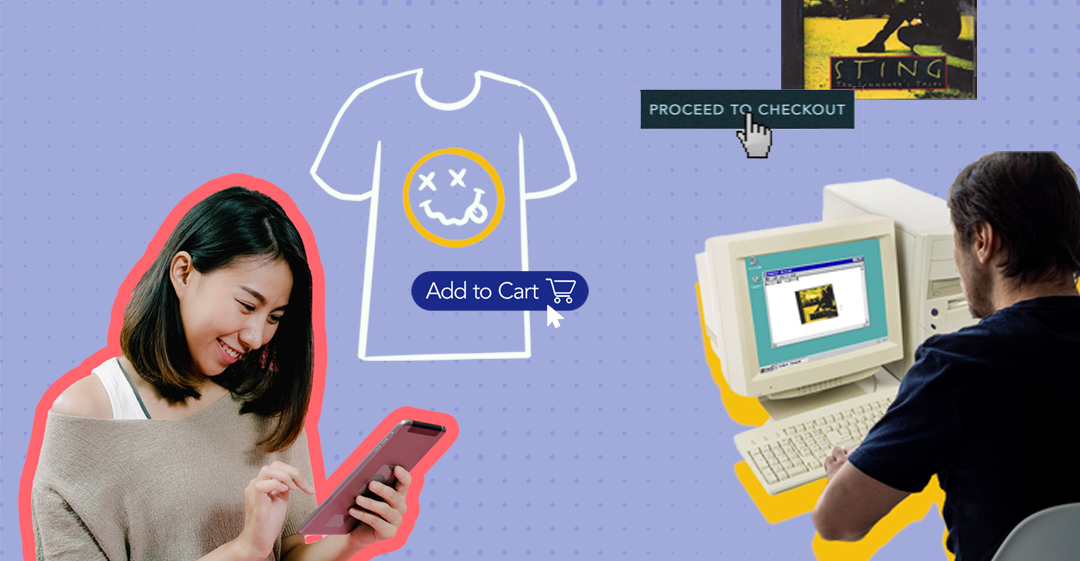
Hot Take: Controversial Questions About Personal Commerce
Retail today is far different than what it looked like even a couple of years ago.
We are now in a digital-first world and shoppers expect retailers to meet them exactly where they are at any point in time. In this landscape, the retailers that will succeed are those that can deliver on the promise of personal commerce by offering authentic, always-on experiences that meet the consumer on their terms, turf and timeline. This means shoppers can engage with brands where and when they want and have consistent, fully personalized experiences everywhere they go.
That was the concept behind our recent broadcast featuring Ascena Retail Group (Ann Taylor, LOFT, Lane Bryant) that highlighted Lane Bryant’s shift from transactional commerce to personal commerce. Along the way, we’ve heard several questions about this approach that are worth digging into. Here’s a look at three of the most controversial questions about personal commerce.
Why wouldn’t we just send a third (or fourth, or fifth…) promotional email today?
Since inception, more email marketing campaigns have meant more email marketing revenue. Over the years, retailers have pushed this concept to the max and commonly message their shoppers as frequently as they possibly can. We’ve seen push-back on this approach in the form of Preference Center popularity in the early 2000s and more recently in calls for ESP functionality like frequency capping and suppression logic. However, for many retailers today, bandwidth is still the biggest constraint on how many promotional emails go out each day — not customer preference. What we’ve learned is a very, very small percentage of customers actually explicitly tell brands their specific preference. So the truth is, if your team could feasibly build and send that third (or fourth, or fifth…) email, they would.
On the one hand, this approach has received its fair share of backlash. The obvious answer to why you wouldn’t send that additional email is that you don’t want to over-message customers. Doing so can create fatigue and a bad overall customer experience. It can also lead to unsubscribes, diminishing your audience for future sends.
But what many retailers have seen in practice is that this penalty isn’t quite as real as we think. Rather, sending another email will drive revenue; and in an industry like retail that’s ruthlessly competitive and has razor thin margins, you can’t afford to have a revenue drop — even in favor of the customer experience. In retail, revenue and profitability will always win.
So why wouldn’t you just send that additional promotional email if you know it will bring in more revenue? Because that revenue doesn’t necessarily translate into long term profitability.
Sending another email to drive immediate revenue is a very transactional state of mind. It focuses on the next purchase and immediate impact of gaining that revenue rather than the long term impact of building a loyal relationship with customers. Instead of focusing on the immediate gratification of a single purchase, think about the long term profitability of getting loyal customers to spend more per purchase and even purchase more frequently.
The key to doing this successfully lies in thinking about the full relationship, rather than each single transaction. Because when you do that, the cost of getting customers to buy actually decreases — it saves your team time and money while even increasing margins due to a decreased reliance on tactics like promotions.
Isn’t the idea of transactional commerce just a way to separate older brands from newer, digital-born brands?
The conversation of transactional commerce vs. personal commerce goes hand-in-hand with the shift to a digital-first world. So aren’t these concepts just ways to separate older brands born in a store-first world from newer brands born in a digital world (who, in many cases, have always been digital-only)?
Absolutely not. In fact, many older brands are already embracing a personal commerce approach while many newer brands are stuck in the transactional commerce world.
Yes, the shift to digital is tightly woven into the shift to personal commerce, but just because you have a digital footprint doesn’t mean you’re practicing personal commerce. Along the same lines, we can’t draw a hard-and-fast line around acquisition vs. retention based on a retailer’s age. For example, many older businesses are currently hyper-focused on acquiring (and then building lifetime relationships with) their next generation of customers.
Ultimately, the age of a retailer is irrelevant to this conversation. What matters instead is the mindset of your leadership and the areas in which your brand is investing. The “new and cool” factor for young brands is a temporary differentiator and a wave that won’t last for too long. That’s why “cool” retailers don’t often attract lifetime customers. The retailers with a lasting impact are those that de-prioritize “cool” for “impact” and focus their investments on strategies that offer meaningful ways to connect with customers and build those lifetime relationships, which today is personalization.
Doesn’t the size of my team limit the extent to which we can scale personalization for customers?
How do you create fully personalized and coordinated experiences across channels for all of your customers? It sounds like it takes significant manpower.
Don’t you need a small army of people to effectively understand what your customers prefer in terms of products, channels, timing, etc. and then deliver the appropriate content, offers and recommendations accordingly? Not to mention making sure all of those personalized elements remain consistent for shoppers as they move from social to email to your ecommerce site to anywhere in between…
Actually, no. In this case, having a small team can be a strength. With the right AI-powered platform, teams of any size can scale personalized experiences consistently across channels with ease.
Large teams can often become unnecessarily complicated, adding a tangled knot of approvals and red tape that tie your hands in making decisions and taking action. Smaller teams — even those who operate as a small group within a large, global retailer — don’t face this challenge. Instead, smaller teams tend to have a much clearer direction and bias toward execution. They also don’t have to go through significant red tape just to try something new. Altogether, this situation gives smaller teams an advantage when it comes to delivering more innovative, highly personalized experiences for customers.
Additionally, with the right technology foundation in place, these smaller teams can focus their manpower on investing in value-add activities like strategy, testing and optimization rather than simply activating campaigns. Overall, this type of setup enables smaller teams to remain nimble and innovative to scale their reach well beyond their actual size — all while larger teams tend to get bloated and bogged down, which actually makes execution slower and can even stem their reach.
What Will Personal Commerce Mean for Your Brand?
Interested in learning more about what the shift from transactional to personal commerce entails and how leading retailers like Lane Bryant are already seeing success with this approach? Click here to watch our broadcast, Beyond Transactional Commerce: Driving Profitability in a Digitally-Dominant World.






